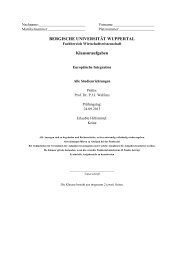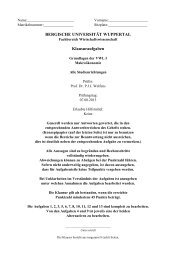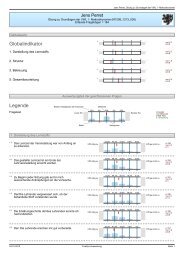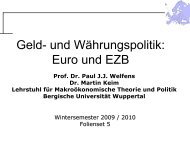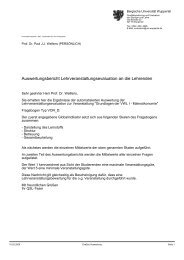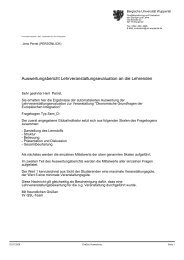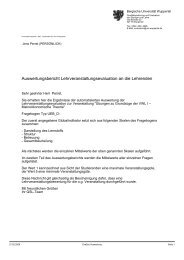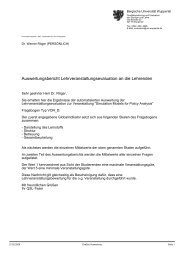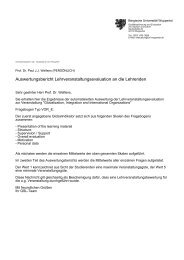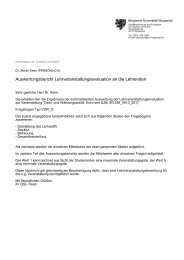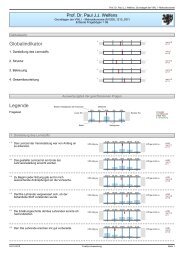UNIVERSITÄT POTSDAM - Prof. Dr. Paul JJ Welfens
UNIVERSITÄT POTSDAM - Prof. Dr. Paul JJ Welfens
UNIVERSITÄT POTSDAM - Prof. Dr. Paul JJ Welfens
Create successful ePaper yourself
Turn your PDF publications into a flip-book with our unique Google optimized e-Paper software.
market. In both the US and EU-15 a shift in the Phillips curve was observed; that is,<br />
unemployment rates could fall without causing inflation rates to rise as steeply as in<br />
previous decades; the NAIRU has reduced (RICHARDSON ET AL., 2000). It is unclear<br />
whether the shift in the Phillips curve is mainly reflecting changes in goods markets<br />
or in labor markets. Part of the explanation might be that the elasticity of the supply<br />
side in goods markets has increased in the context of an expanding New Economy;<br />
with more and more digital services being developed and sold within the business<br />
community and directly to consumers the fact that digital services hardly face any capacity<br />
constraint suggests that at least in the services sector the supply elasticity has<br />
increased. To the extent that international outsourcing of labor-intensive services is<br />
facilitated by the internet, there is another argument why tightening labor markets<br />
would not lead to wage increases as fast as in the past.<br />
The strong depreciation of the euro in 1999/2000 raises the issue of links between<br />
the exchange rate and the price level. A strong depreciation will raise the price of<br />
tradables with a certain time lag unless there is a high rate of process innovations which<br />
would bring about reductions in unit labor costs (or in capital costs). Even with a depreciation<br />
of the currency it remains to be seen how monetary policy will behave on the<br />
one hand and how stock markets will develop on the other hand. For the inflation<br />
analysis we will focus on a modified quantity equation (WELFENS, 2000):<br />
(I) MV’(i,Y) = PY + φ(i,...)P’Q,<br />
where M is the nominal stock of money, V’ velocity of money, Y real output, P the<br />
price level (with P=(P T ) ß (P N ) 1-ß ; where ß is the share of tradables in overall demand), φ<br />
the velocity of the representative portfolio – indicating how often the stock of bonds<br />
and equities invested have been sold – P’ the price of stocks, and Q the number of<br />
stocks. With the assumption V= v(i)Y χ – with the absolute value of 0



